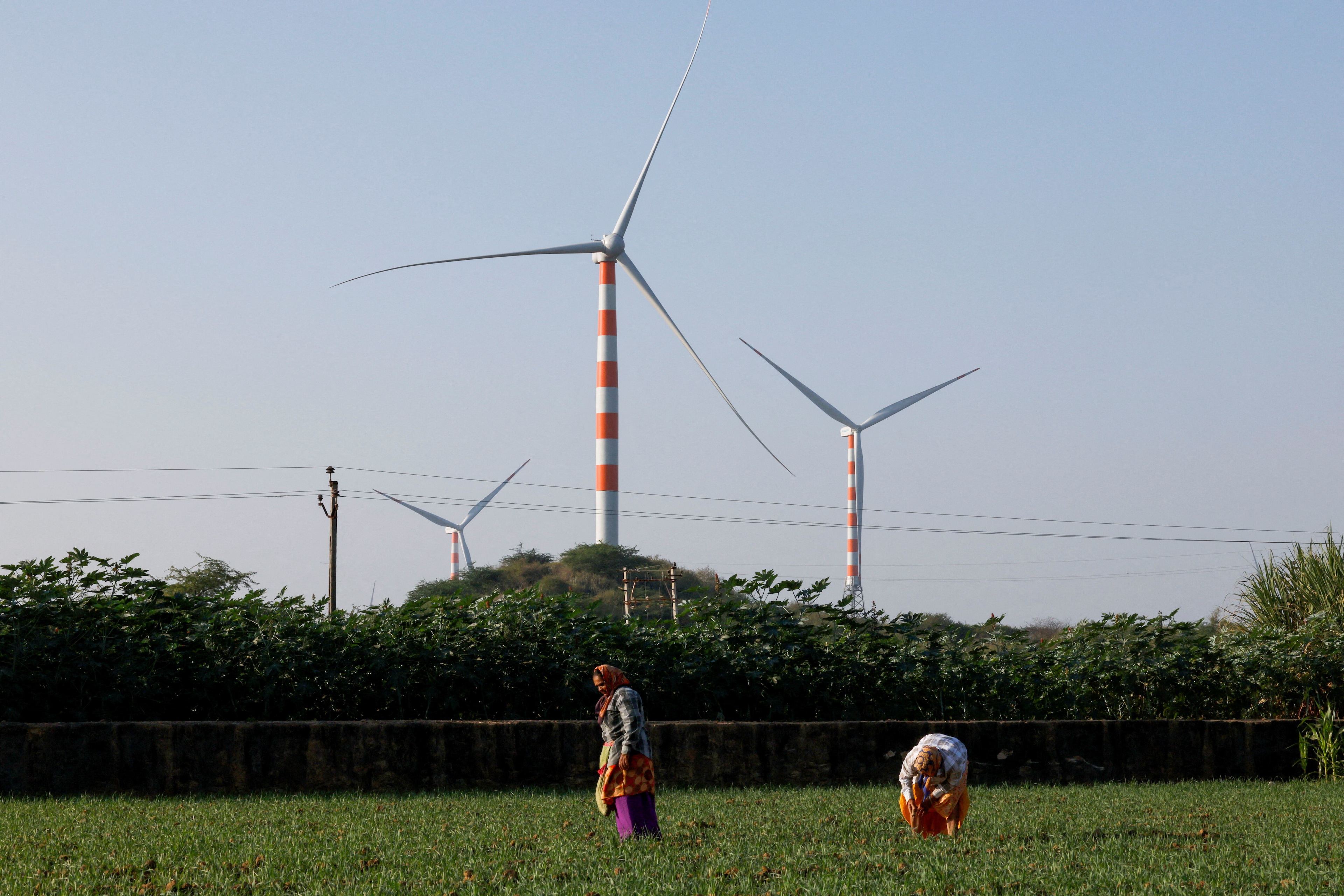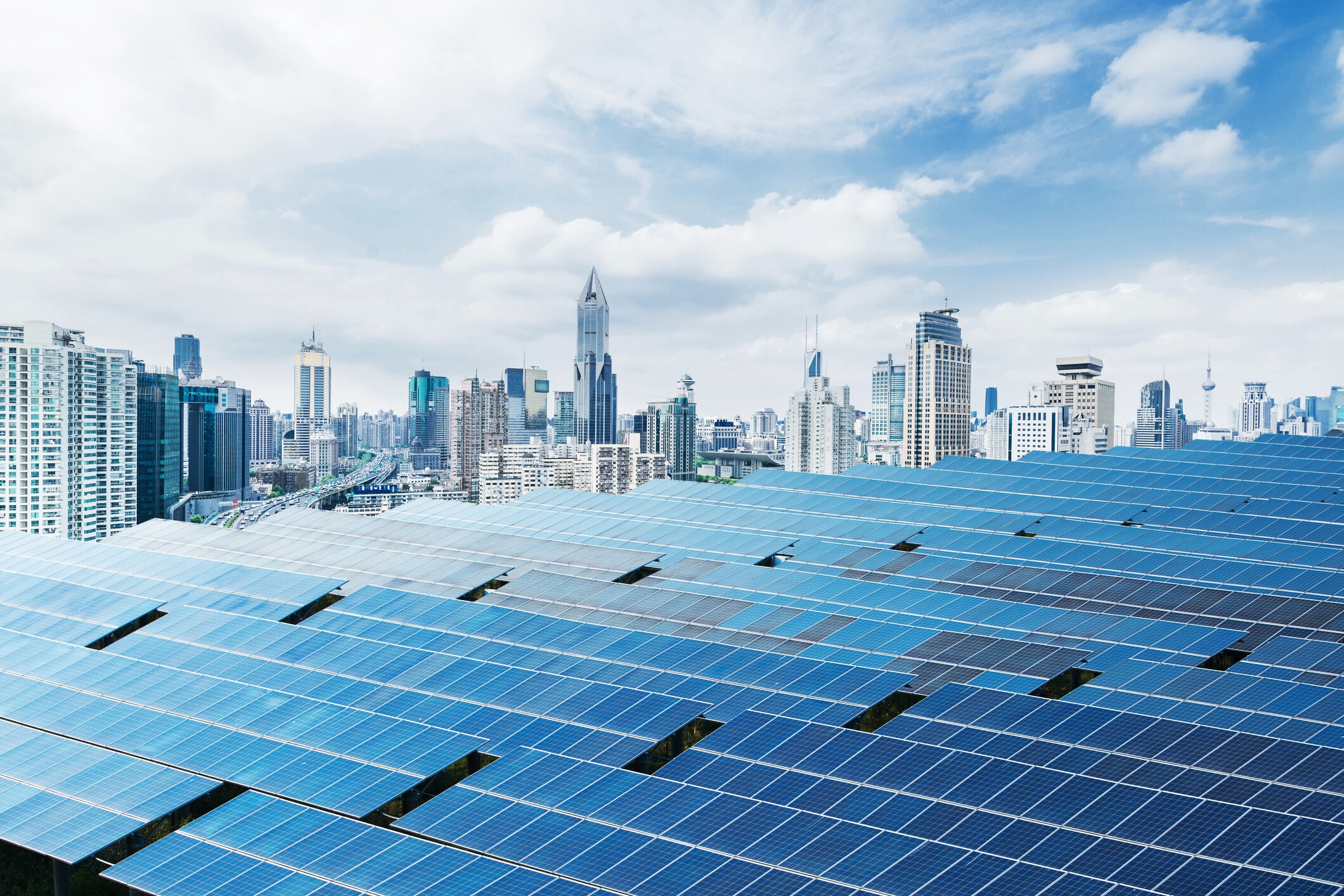Azerbaijan announces green investment push ahead of COP29 - plus other top energy stories

The current share of renewables in installed capacity in Azerbaijan is 20.86%.
Image: Unsplash/Lloyd Alozie
Roberto Bocca
Head, Centre for Energy and Materials; Member of the Executive Committee, World Economic Forum- This round-up brings you the key energy stories from the energy sector over recent weeks.
- Top energy stories: Azerbaijan announces $2 billion of green investment; Delay in US coal plant retirement with surge in electricity growth anticipated.
- For more on the World Economic Forum’s work in the energy space, visit the Centre for Energy and Materials.
1. COP29 host announces green investment
Azerbaijan, the host nation of the climate summit COP29 in November, has announced plans to increase the share of renewables across its energy sector to almost a third.
Announcing the $2 billion of green investment, Minister of Energy Parviz Shahbazov said: “By 2027, in the first phase of partnership with energy companies, we are planning to realize close to 2GW of new renewable volumes, which will increase the share of renewables in installed capacity to 33%.”
The ministry added that the current share of renewables was 20.86%.
But Shahbazov also said: “Despite the global downtrend in fossil fuel financing and lack of long-term demand guarantees, Azerbaijan remains committed to gas supply to its partners.”
2. Delay in retirement for US coal plants
The US is slowing its plan to retire coal-fired power plants, with technology like AI straining power supplies, the Financial Times reports.
Research from S&P Global Insights has found that an estimated 54GW of US coal-powered generation assets is expected to be retired by the end of the decade. This is a 40% downward revision from last year.
Meanwhile, Grid Strategies has revised its five-year growth forecast for electricity demand to 4.7% from 2.6% a year earlier. The consultancy cited demand for new manufacturing, industrial and data centre facilities as the reason for the growth.
FirstEnergy has delayed plans to convert one of its coal-fired plants in Wisconsin to gas from 2025 to 2028. The company has also said it is abandoning its 2030 target for coal phaseout, citing “resource adequacy concerns”.
The Centre for Energy and Materials' Coal to Renewables initiative addresses the challenges of phasing down global coal use in the power sector and accelerates international partnerships.
3. News in brief: More energy stories from around the world
Africa’s vast and diverse deposits of the minerals required for the energy transition can power a sustainable energy future for the continent, UN Trade and Development (UNCTAD) Secretary-General Rebeca Grynspan has said. Speaking at an event in Addis Ababa marking 60 years of the organization, Grynspan said: “Cobalt, manganese, graphite, lithium are not just elements on the periodic table. They can be the building blocks of a new era – powering our homes, driving our vehicles, and connecting our world. Catalyzing a green revolution that can lift millions out of poverty and create a fairer world.”
Learn about how the Securing Minerals for the Energy Transition initiative under the Centre for Energy and Materials promotes collaboration to ensure the availability of sustainable and affordable minerals.
Global investment in clean energy technology and infrastructure is set to reach $2 trillion this year, double the amount of investment in fossil fuels, according to the International Energy Agency (IEA). The agency’s annual World Energy Investment report does, however, warn that, beyond China, there is a low level of clean energy spending in emerging and developing economies.
The Centre for Energy and Materials has just launched a report to surface solutions to catalyse green investments and support South Africa’s just clean energy transition. The Centre convenes a public-private network to develop practical solutions to accelerate the financing of energy transitions in emerging and developing economies.
The draft energy mix blueprint for South Korea has said the country will aim to generate 70% of its electric power from carbon-free energy sources such as renewables and nuclear power by 2038. The government has said this will be driven by four new nuclear power plants by 2038 and a tripling of solar and wind output from 2022 levels by 2030.
OPEC+ has said it will extend most of its deep cuts in oil output until the end of 2025. The alliance is currently cutting output by a total of 5.86 million barrels per day (bpd), which accounts for around 5.7% of global demand and is made up of 3.66 million bpd of cuts and 2.2 million bpd of voluntary cuts by eight members. The main cuts will now be extended to the end of 2025 and the voluntary cuts have been extended to the end of September 2024.
There is no need for new fossil fuel projects, says a study based on the demand for oil and gas, as well as coal and gas-fired electricity, in the UN Intergovernmental Panel on Climate Change (IPCC) scenario that limits global warming to within 1.5°C above pre-industrial levels.
Chinese electricity company, SPIC, will make its debut in Brazil’s solar sector by building two new wind farms in Northeastern Brazil. The CEO of the company’s Brazil unit, Adriana Waltrick, told Reuters the $147 million investment aligned with the company’s aim of becoming one of Brazil's three largest energy generators.
An outage at a gas processing plant in Norway led to Europe’s gas price jumping to its highest level this year, reports the Financial Times. The price of the European benchmark TTF surged past €38 per megawatt hour on 3 June. It has since settled at €35.43 at the start of trading on the 13 June.
The Biden administration in the US has proposed extending the tax credits that support the solar and wind sector to cover a wider range of green energy projects. The Treasury Department’s proposal identifies marine and hydrokinetic energy, nuclear fission and fusion, hydropower, geothermal and some forms of waste energy recovery as technologies eligible for the tax credits.
4. More on energy from Agenda
Small island states may only contribute a small share of global greenhouse gas emissions, but that doesn’t stop them setting ambitious net zero targets. Find out which countries are leading the way.
Demand for critical minerals is set to surge, leading to a potential shift in the global power centre. However, energy policy expert Jason Bordoff says the energy transition is one of the greatest economic opportunities since the Industrial Revolution.
As electric vehicle sales continue to surge, here are three ways to accelerate the clean transport transition across communities.
Accept our marketing cookies to access this content.
These cookies are currently disabled in your browser.
More on Energy TransitionSee all
Gaurav Upadhyay and Labanya Prakash Jena
August 8, 2025
David Timis
August 8, 2025
Forum Stories
August 6, 2025
Marina Colombo and Lynn Kappes
August 6, 2025
Sverre Alvik
August 5, 2025
Michael Wang
July 28, 2025





